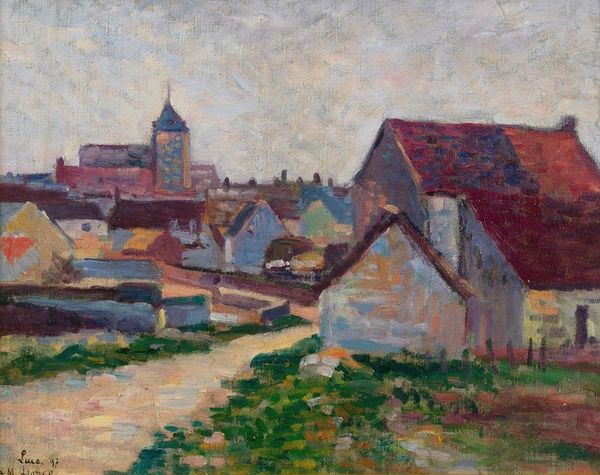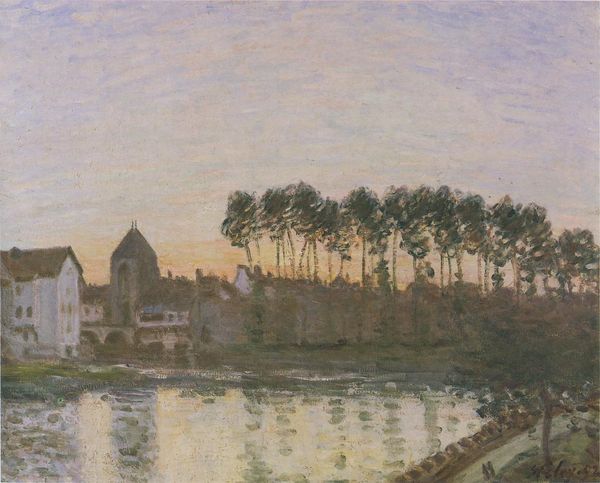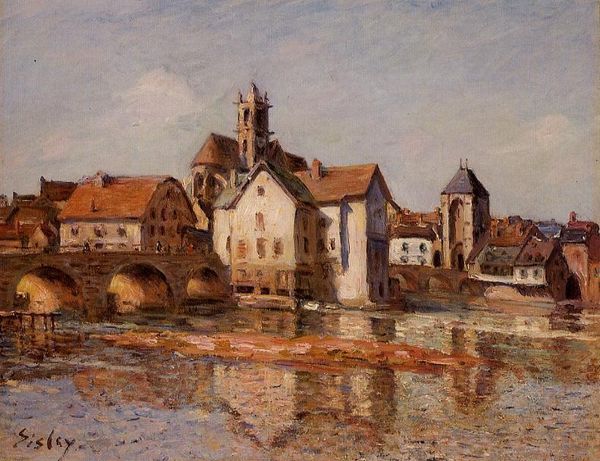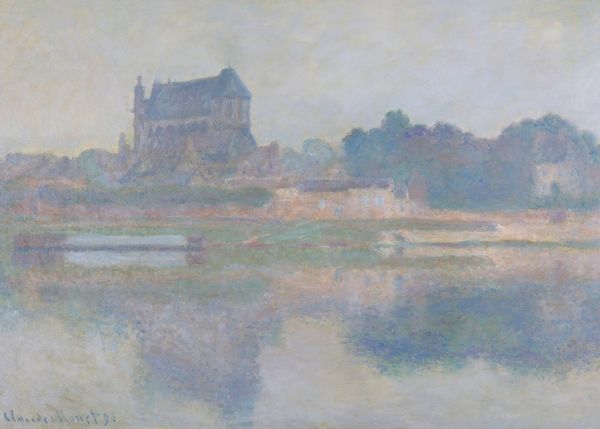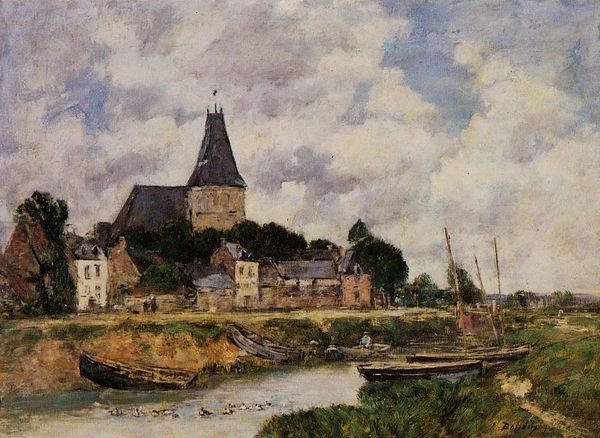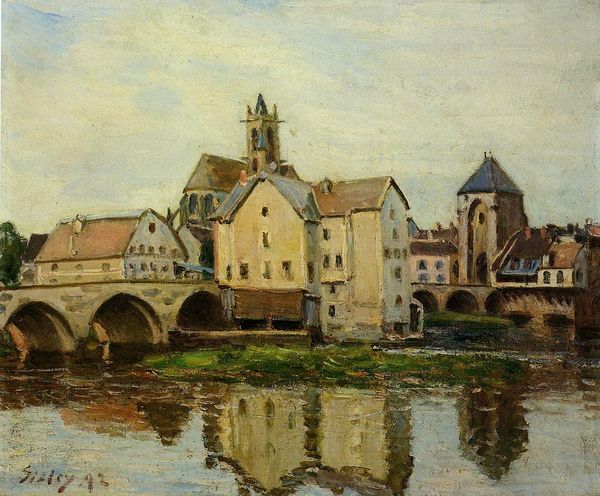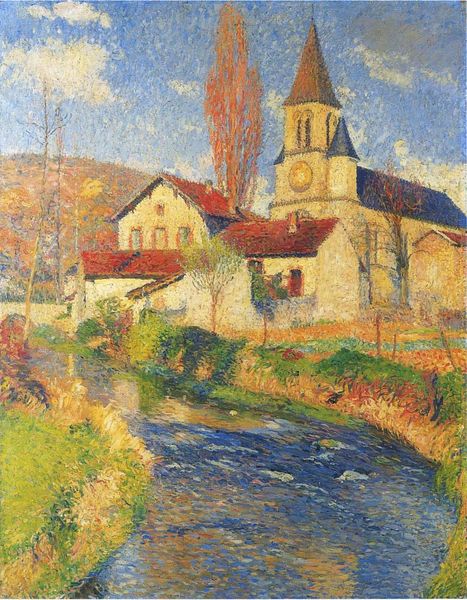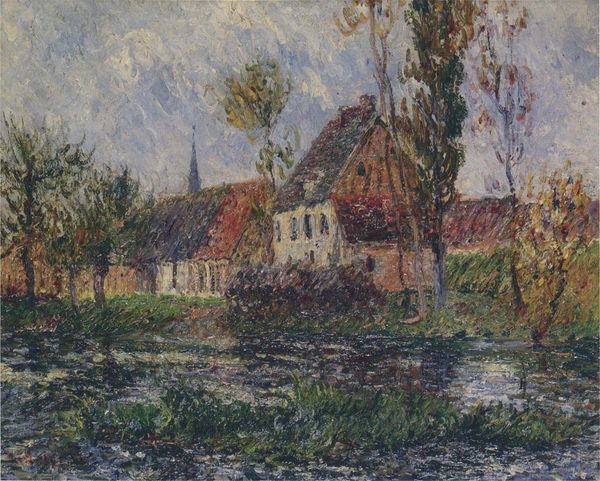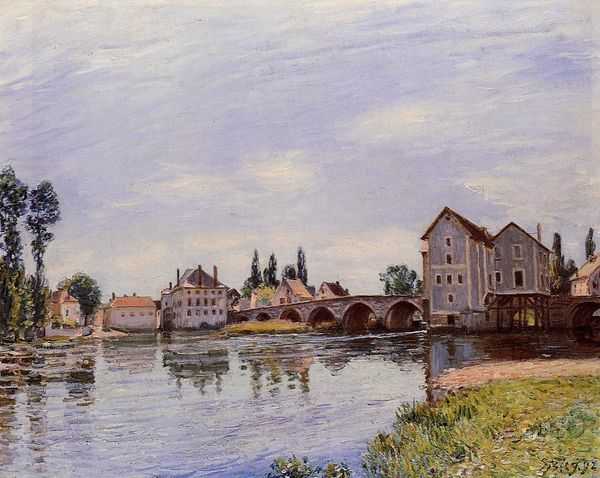
Dimensions: 53.4 x 64.7 cm
Copyright: Public domain
Editor: This is "Landscape," painted by Gustave Loiseau in 1907. It's an oil painting, done en plein-air, and it has such a serene, almost ethereal quality to it. What strikes me is how Loiseau captured the light. How do you interpret this work from a formalist perspective? Curator: The immediate draw is certainly the composition itself. Note the careful arrangement of the buildings, the way they're nestled amongst the trees, almost dissolving into them. Consider the dominance of vertical elements - the spire and the taller buildings which draw the eye upwards. This upward movement contrasts with the horizontal emphasis created by the bridge and the muted tonality of the river itself. How does that visual dichotomy influence your reading? Editor: I guess it makes the overall feeling a bit more grounded. It's airy at the top but feels solid at the base. But is the hazy atmosphere typical of impressionism simply decorative or does it play into how we perceive the overall structure? Curator: Precisely! The hazy brushwork blurs the distinct boundaries, softening the rigid structure of the buildings. Think of the materiality of the paint itself. The visible brushstrokes aren't just mimicking the fleeting effects of light; they're constructing a surface, creating a textural dimension which pulls the viewer into a subjective sensory space. Consider also the restricted palette of greens, browns and muted reds. Are they simply representational or could they suggest something beyond the depicted landscape? Editor: I hadn’t considered the limitation of the palette as a structuring element! I was too focused on the picturesque scene itself. Curator: Exactly! By focusing on the formal relationships of color, texture, and line, we uncover how meaning emerges, almost independently of subject matter. The landscape becomes secondary to the aesthetic experience of the artwork. Editor: That really opens up a new way of seeing. It is fascinating how much you can discover by looking at just the art itself, separate from everything else. Curator: Indeed. Shifting our gaze inward towards the canvas rather than outwards reveals that the essence resides within its very composition.
Comments
No comments
Be the first to comment and join the conversation on the ultimate creative platform.
